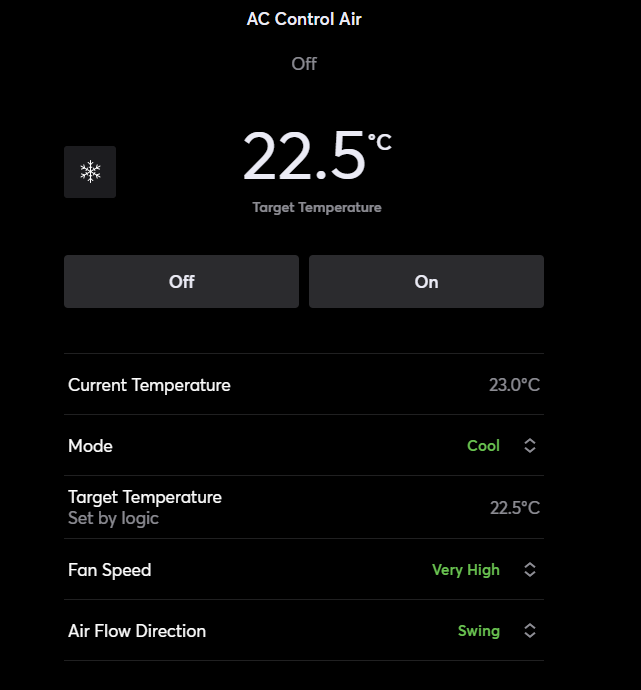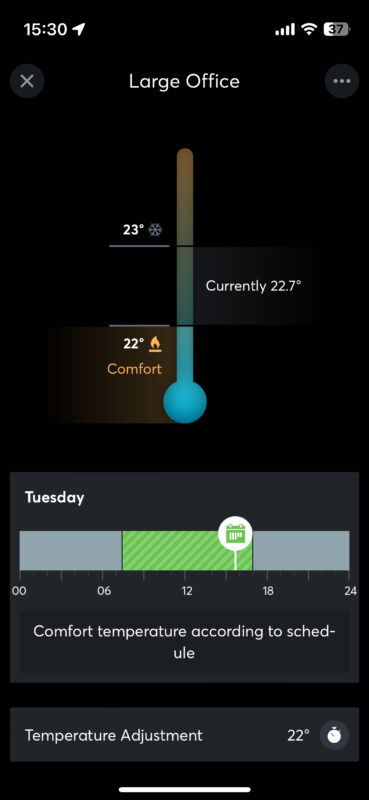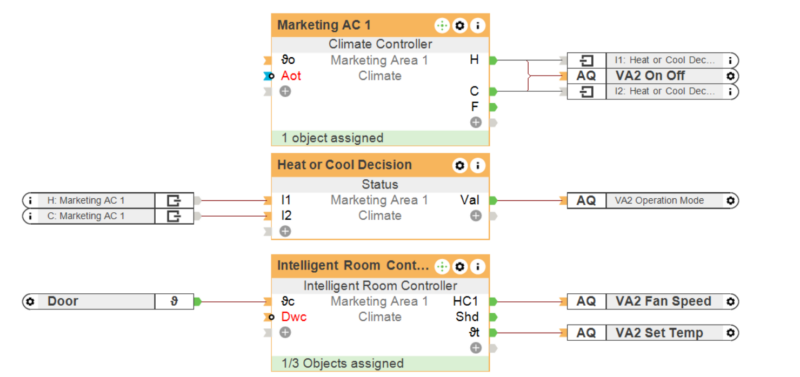Brief: I want to optimise the air conditioning in a commercial building to save energy costs without reducing convenience for users.
Air conditioning systems use a significant amount of energy while on. If air conditioning is a must for comfort during the day, particularly during the summer and winter months, there will be a surge in electricity demand and consumption. Depending on the energy efficiency of the unit, the cost of electricity at the time, and the duration for which the unit is on, the bills can add up very quickly. Factors such as the number and size of rooms, insulation and occupancy patterns will also affect this.
If the air conditioning is used as a heat source in winter, the energy demand will likely be greater than when in cooling mode, and if the building uses solar energy to run the AC, this is going to be a more scarce energy source in the winter, meaning higher demand on the grid and ultimately a more costly energy bill.
In addition, in commercial settings, people will have individual room temperature preferences. This can result in each person adjusting the heating or cooling multiple times during the day, making it very hard to settle on a dedicated comfort temperature.
So, is there a way to optimise air conditioning in a commercial building to save energy? Yes! Intelligent control of the air conditioning in commercial buildings significantly increases comfort and reduces energy consumption which contributes to saving costs and protecting the planet.
This Use Case will show you how adding control of the aircon units into the Loxone building management system produced a 25% monthly saving in Loxone’s UK office.
Solution: Integrating air conditioners into the Loxone automation system for fully automated control to lower consumption and costs.
There are several different ways to integrate AC units into Loxone. This depends on the units themselves. In the Use Case mentioned above, the integration was done using a CoolMaster device. Since that integration, Loxone has released the AC Control Air range of devices which support models from various global manufacturers including Mitsubishi Electric, Mitsubishi Heavy Industries, Gree, Fujitsu, Daikin P1P2, Toshiba and Daikin S21.
The first integration option intentionally makes use of the Intelligent Room Controller Function Block which gives a detailed level of intelligent automation of the AC units. The second option intentionally doesn’t make use of the Intelligent Room Controller, instead giving streamlined control of the units for example in the Loxone App, which is a great way for facilities managers to centrally control units throughout a building or even across multiple sites.
Air conditioner automation with Loxone provides convenient comfort and energy efficiency. Automating the AC system goes beyond just scheduled temperature changes. By ensuring that the AC operates only when necessary and at optimal levels – combined with a more informed placement of temperature sensors – it allows for significant reduction in energy consumption and consequently in operating costs. Efficient AC usage leads to a reduced strain on the electrical grid, especially during peak times. Reduced energy consumption means fewer greenhouse gas emissions. Automated systems can adjust the operation of the AC based on external and internal temperature readings, ensuring the unit runs only when needed. Based on the collected data, the Loxone system can predict when to turn on or adjust the AC for optimal comfort and efficiency – taking into account individual room temperatures, operating hours, presence and weather compensation. If manual control is needed, the Loxone App provides an easy-to-use interface where temperature adjustments can be done in seconds anytime from anywhere.
The Loxone home and building automation system offers a unified, holistic solution that can offer even more energy efficiency when combined with other functionality of the building. For example, if the blinds in a commercial building are also controlled by Loxone, these could raise in the morning to let in natural warmth, putting less demand on the aircon units. Likewise, lowering the blinds on a very warm day puts less pressure on the AC units to cool the commercial building by blocking some of the solar irradiation.
Hardware:
- Miniserver (can be Miniserver, Miniserver Compact or Miniserver Go)
- Air Base Extension (to use with Miniserver)
- AC Control Air (for Mitsubishi Electric, Mitsubishi Heavy Industries, Gree, Fujitsu, Daikin P1P2, Toshiba or Daikin S21 AC units)
Configuration:
Download the sample Config file:
This example Config is specifically for the integration of the CoolMaster device mentioned above.
AC control in commercial buildings - the savings
Video:



